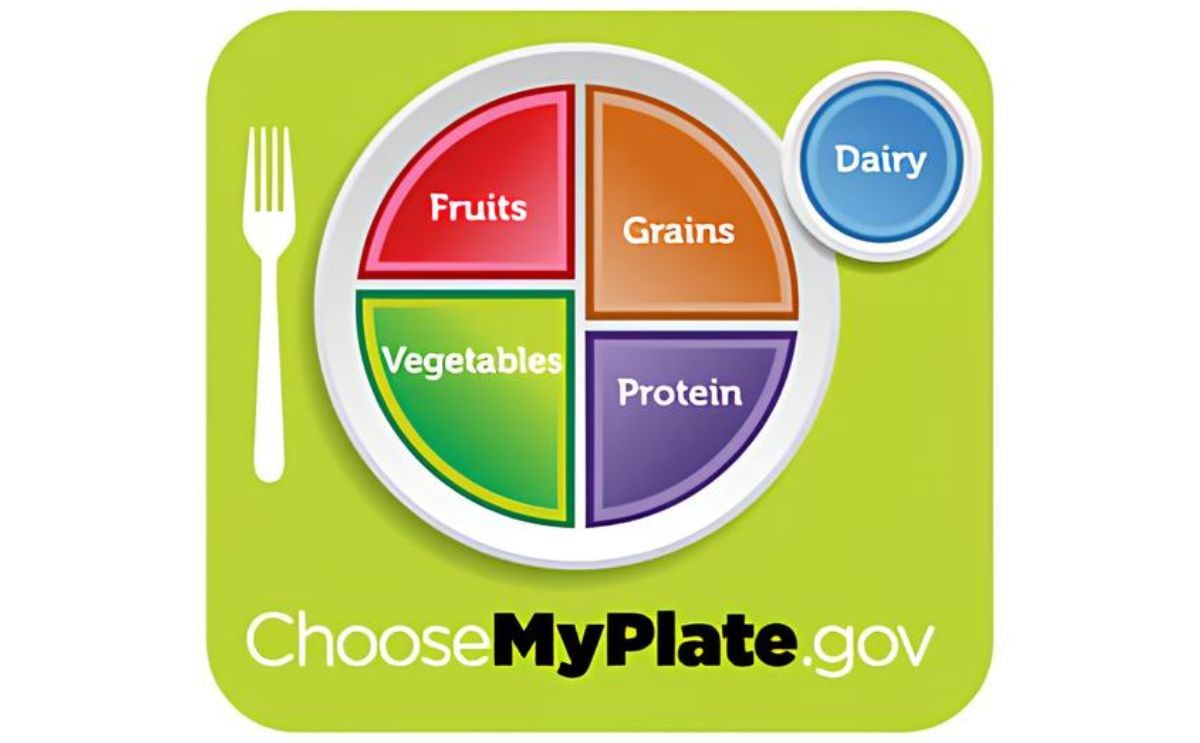MyPlate
Solapas principales
Potatoes Make the Plate! New MyPlate Icon Recommends Half the Plate as Fruits and Vegetables

The recent unveiling of the United States Department of Agriculture’s (USDA) MyPlate icon heralded a bold, new visual reminder of the importance of fruit and vegetable consumption, filling half the plate with these two important food groups.
The United States Potato Board (USPB) commends the USDA on developing this straightforward visual icon designed to prompt consumers to build a healthy plate at meal times by emphasizing the fruit, vegetables, grains, protein and dairy food groups.
“Both parents and children can relate to MyPlate, making it easier to incorporate the 2010 Dietary Guidelines for Americans into every day food choices,” said Tim O’Connor, President and CEO of the USPB. “Potatoes are a nutritious, budget-friendly and versatile vegetable choice, and MyPlate clearly demonstrates that potatoes can help consumers meet vegetable consumption recommendations.”
This is music to the ears of potato lovers as potatoes are mentioned multiple times in sample MyPlate menu plans and in tips for incorporating more vegetables into meals. In addition, potatoes are specifically identified as a vegetable that contributes to the critical need for more potassium.
An analysis of National Health and Nutrition Examination Survey (NHANES) data recently presented at the 2011 Federation of American Societies for Experimental Biology (FASEB) Conference in Washington, D.C., showed that meals including white potatoes contain more servings of other vegetables, and are significantly higher in potassium, fiber and vitamin C. Both potassium and fiber were identified as nutrients of concern in the 2010 Dietary Guidelines for Americans, and potatoes provide the largest and most affordable source of potassium of any vegetable or fruit.
“Our research demonstrates that children who consume white potatoes actually eat more of other vegetables and they had higher dietary intake of potassium, vitamin C and fiber,” said Adam Drewnowski.
One medium-size (5.3 ounce) skin-on potato contains just 110 calories per serving, provides almost half the daily value of vitamin C (45 percent), and contains no fat, sodium or cholesterol, contributing significantly to healthy American mealtimes.
The United States Potato Board commends the USDA for recognizing the need for a change in the food guide icon and is proud to be a part of the effort to help Americans make healthier choices. For potato nutrition information, how-to cooking videos and a database of healthy potato recipes please visit https://potatogoodness.com/.
The United States Potato Board (USPB) commends the USDA on developing this straightforward visual icon designed to prompt consumers to build a healthy plate at meal times by emphasizing the fruit, vegetables, grains, protein and dairy food groups.
“Both parents and children can relate to MyPlate, making it easier to incorporate the 2010 Dietary Guidelines for Americans into every day food choices,” said Tim O’Connor, President and CEO of the USPB. “Potatoes are a nutritious, budget-friendly and versatile vegetable choice, and MyPlate clearly demonstrates that potatoes can help consumers meet vegetable consumption recommendations.”
This is music to the ears of potato lovers as potatoes are mentioned multiple times in sample MyPlate menu plans and in tips for incorporating more vegetables into meals. In addition, potatoes are specifically identified as a vegetable that contributes to the critical need for more potassium.
An analysis of National Health and Nutrition Examination Survey (NHANES) data recently presented at the 2011 Federation of American Societies for Experimental Biology (FASEB) Conference in Washington, D.C., showed that meals including white potatoes contain more servings of other vegetables, and are significantly higher in potassium, fiber and vitamin C. Both potassium and fiber were identified as nutrients of concern in the 2010 Dietary Guidelines for Americans, and potatoes provide the largest and most affordable source of potassium of any vegetable or fruit.
“Our research demonstrates that children who consume white potatoes actually eat more of other vegetables and they had higher dietary intake of potassium, vitamin C and fiber,” said Adam Drewnowski.
One medium-size (5.3 ounce) skin-on potato contains just 110 calories per serving, provides almost half the daily value of vitamin C (45 percent), and contains no fat, sodium or cholesterol, contributing significantly to healthy American mealtimes.
The United States Potato Board commends the USDA for recognizing the need for a change in the food guide icon and is proud to be a part of the effort to help Americans make healthier choices. For potato nutrition information, how-to cooking videos and a database of healthy potato recipes please visit https://potatogoodness.com/.
¿Te gustaría recibir noticias como esta por correo electrónico? ¡Únete y suscríbete!
Get the latest potato industry news straight to your WhatsApp. Join the PotatoPro WhatsApp Community!
Empresa Destacada
Contenido Patrocinado
Contenido Patrocinado
Contenido Patrocinado
Contenido Patrocinado







